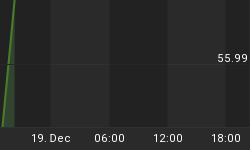Below is an extract from a commentary originally posted at www.speculative-investor.com on 21st January 2007.
Will lower short-term interest rates be a significant plus for the stock market?
Earlier in today's report we speculated that the Fed Funds Rate would be unchanged during the first half of this year and then fall by more than the market is presently expecting during the second half. The question we now want to address is: if things pan out in this way on the interest rate front, will the stock market be a beneficiary?
More often than not, lower interest rates are a net-positive for stock prices. In this particular case, however, thinking that lower short-term interest rates during the course of 2007 will contribute to a good performance by the stock market is getting the relationship backwards. The reason is that short-term interest rates probably won't fall this year unless the stock market performs poorly.
Regular readers of TSI commentaries over the past couple of years will no doubt recall our argument that the Fed's rate-hiking campaign would continue until the stock market and/or the commodity market broke down. Well, the commodity market has broken down over the past seven months and this has caused the yield on the 2-year T-Note to move a little lower and the Fed to go into a 'holding pattern'. However, up until now investors have tended to view the commodity decline as an economic positive rather than a harbinger of much slower economic growth, so prices outside the commodity sphere have continued to rise. In other words, there appears to have been a change in the main focus of speculation rather than a widespread 'cooling off'.
Although the prices of cyclical commodities such as oil and copper will probably move lower before their corrections are complete, in the absence of a recession their ultimate correction lows aren't likely to be far below current levels. Therefore, there doesn't appear to be much scope for additional weakness in commodities to push short-term interest rates downward UNLESS the weakness is associated with a substantial economic slowdown, in which case the stock market will be acutely vulnerable.
Further to the above, we don't think it makes sense to use the prospect of Fed rate cuts to justify a bullish intermediate-term stock market outlook. If this is going to be a good year for the stock market then there will need to be enough liquidity-driven 'growth' to prevent the Fed from cutting, combined with enough additional weakness in commodities to prevent the Fed from hiking. We can't say that such an ideal scenario is impossible, but it certainly doesn't look probable.
Current Market Situation
There were key reversals to the downside last week in the NASDAQ100 Index (NDX) and the NASDAQ Composite Index in that both indices made new 52-week highs and then ended down on the week. Also, the following chart shows that last week's decline by the NASDAQ Composite Index negated the preceding week's upside breakout.
The NASDAQ has good support at 2375-2400 and will need to close below this support range to confirm that something more serious than a brief pullback is underway. However, it is beginning to look like the US stock market has made another in a long line of January reversals from up to down.

A bearish divergence between the S&P500 Index and the NDX/Dow ratio has occurred prior to all important peaks in the US stock market over the past several years, and such a divergence -- the S&P500 trending higher while NDX/Dow trends lower -- has been developing over the past two months. The following chart shows the current bearish divergence as well as the one that occurred during the first half of last year. Note that last year's divergence continued to build for about 4 months and it wasn't until NDX/Dow broke below its March low that the S&P500 reversed downward 'for real'.

We don't think a major decline has begun, but the US stock market's risk/reward looks unappealing over every timeframe.















